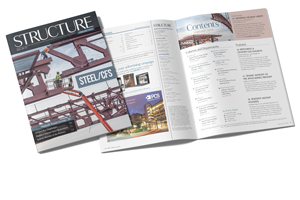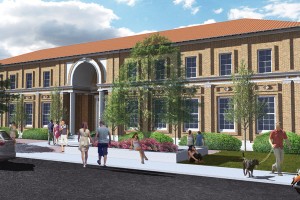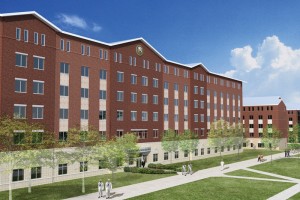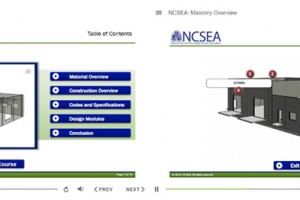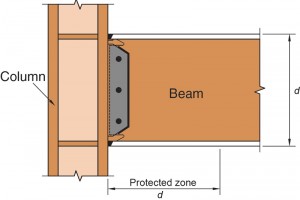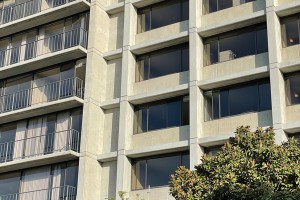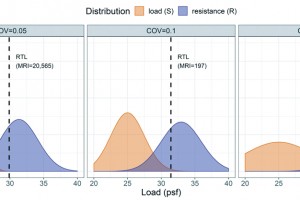Yearly Archives : 2022
Nashville International Airport’s Inspirational Terminal Lobby and IAF Expansion Project Rise to Meet Soaring Passenger Demands
So much of Nashville, Tennessee, is defined by the inspired and creative music of the famed Music City. So when the airlines approached Nashville International Airport® (or BNA, as it is also known) with requests to expand their facilities to meet ever-increasing numbers of domestic and international passengers, it was clear the project would need to embody its city’s energy and character.
…The NH Collection New York Madison Avenue Hotel Renovation
The newly renovated NH Collection New York Madison Avenue Hotel, located at 22 East 38th Street in Midtown Manhattan, is housed in the former Renaissance Revival-style Fraternities Club Building constructed in 1923. The seventeen-story building is approximately 125 feet wide by 100 feet long by 220 feet tall and has multiple setback roofs. The NH Hotel Group, SA (NH) hired Simpson Gumpertz & Heger, Inc. (SGH) as the Engineer of Record, and HLW International, LLP (HLW) as the Architect of Record, to modernize and transform the hotel. The work included creating two double-height lobbies, updating the facilities, and modernizing the guest rooms. These upgrades required strengthening and repairing the existing structure. NH engaged Newgrange Construction (Newgrange) as the contractor for the renovation.
…On December 22nd, 2003, the San Simeon Earthquake shook the central California coast damaging two historic unreinforced masonry buildings in downtown Atascadero. One of those buildings was The Printery, constructed in 1915 to house E.G. Lewis’ (the Founder of the Colony of Atascadero) printing operation. Since the earthquake, the building has been abandoned and has suffered from vandalism over the years. In 2016, FTF Engineering was introduced to a non-profit looking to purchase the building to transform it into a community arts building (Figure 1). The non-profit, operating as The Printery Foundation, was able to secure ownership of the building from a public auction in 2017.
…This Bachelor Enlisted Quarters (BEQ) project is a $60 million multi-story housing complex for enlisted military personnel. In addition to sleeping rooms, the facility includes an entry vestibule, quarterdeck, multi-purpose rooms, classrooms, laundry areas, and other support spaces. The T-shaped building results from multiple studies that considered site orientation and access, parking layout, view planes for future expansion, and more (Figure 1).
…While the effect of the Covid pandemic on today’s workforce will be written about for years, one segment of this workforce that I have seen affected directly is recent college graduates.
…Part 4: Concrete and Steel (Chapters 19 and 22)
This five-part series discusses significant structural changes to the 2021 International Building Code (IBC) by the International Code Council (ICC). Part 4 includes an overview of changes to Chapter 19 on concrete and Chapter 22 on steel. Only a portion of the total number of code changes to these chapters are discussed in this article. More information on the code changes discussed here can be found in the 2021 Significant Changes to the International Building Code, available from ICC (Figure 1).
…Part 2
A recent seismic retrofit project provided an opportunity to test an interior concrete column retrofit with a three-sided, fiber-reinforced polymer (FRP) wrap with FRP through-anchors on the fourth side. The testing demonstrated the effectiveness of this application, which could be applied to columns or beams with deficient shear strength in situations where site conditions prevent access to one side of the member. Please refer to Part 1 (STRUCTURE, January 2022) for additional testing information.
…What Has Changed and Why?
The new ASCE 7-22, Minimum Design Loads for Buildings and Other Structures, ground snow load maps target uniform reliability rather than a uniform hazard (Bean et al., 2021). Previously, the ASCE 7 snow loads used a uniform-hazard 50-year mean recurrence interval (MRI) with a 1.6 load factor. These loads resulted in non-uniform reliability for structures across the country. The site-specific ground snow load determination is no longer tied to a uniform hazard (i.e., X-year recurrence interval) but to the safety or reliability levels stipulated in Chapter 1 of ASCE 7. The new strength level loads are used with a load factor of 1.0, as shown in Equation 1, and were selected to create uniform reliability across the country. These loads are mapped in the new ASCE 7-22 Chapter 7 in the online Hazard Tool and additionally reduced the number of case study regions by 90%.
…During my two-plus year tenure as the Editorial Board Chair and the several years before that as a Board member, STRUCTURE has received several proposed articles on three topics: 1) the experiences of engineers with many years in practice, 2) the current state of the industry and the inner workings of firms, and 3) the perceived unnecessary expansion of the building code and over-regulation. Of course, the same individuals did not necessarily write these articles. Still, if I were to do some research, I would expect to find that the authors have similar professional experience, job tenure, standing in their firms, firm ownership, and socio-economic situations. Not to generalize, but these engineers are likely to be older and in the middle or later parts of their careers.
…
